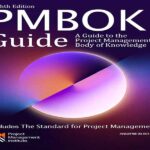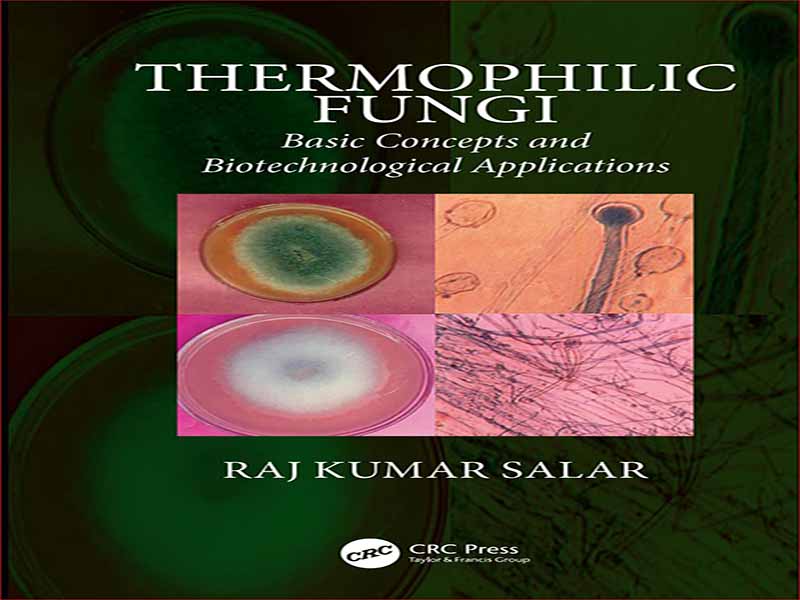- عنوان کتاب: Thermophilic Fungi / Basic Concepts and Biotechnological Applications
- نویسنده: Raj Kumar Salar
- حوزه: بیوتکنولوژی
- سال انتشار: 2018
- تعداد صفحه: 352
- زبان اصلی: انگلیسی
- نوع فایل: pdf
- حجم فایل: 18.2 مگابایت
اکنون به خوبی شناخته شده است که حیات میکروبی می تواند در دماهای بالا وجود داشته باشد، جایی که اکثر اشکال حیات دیگر قادر به ادامه حیات نیستند. قارچهایی که در دمای فوقالعاده بالا رشد میکنند به نظر میرسد «گنجینهای» برای تحقیقات بنیادی و کاربردهای بیوتکنولوژیکی هستند. اولین گزارش جامع مدرن از زیستشناسی و طبقهبندی قارچهای ترموفیل توسط کونی و امرسون در سال 1964 منتشر شد. با این حال، در طول پنج دهه گذشته، تعدادی از قارچهای گرمادوست کشف و در ادبیات مستند شدهاند. هدف این کتاب، قارچ های گرمادوست: مفاهیم پایه و کاربردهای بیوتکنولوژیکی، ارائه گزارشی جامع در مورد قارچ های گرمادوست است. این با مفاهیم اساسی قارچهای گرمادوست آغاز میشود و تاریخچه اولیه، روابط زیستگاه، انزوا و فرهنگ، و ارتباط بیوتکنولوژیکی آنها را پوشش میدهد. این کتاب به سه بخش تقسیم شده است که به طور جامع جنبه های اساسی را پوشش می دهد. طبقه بندی و طبقه بندی، از جمله فیلوژنی مولکولی. و کاربردهای بیوتکنولوژیکی قارچ های گرمادوست تمام فصول شامل تحقیقات و نوآوری های اخیر است که در مورد یک موضوع فرعی خاص انجام شده است و چارچوبی را ارائه می دهد که دانش آموزان و محققان می توانند دانش خود را در مورد قارچ های گرمادوست بر اساس آن ایجاد کنند. فهرستی از منابع در پایان هر فصل برای خوانندگان ارائه شده است تا در مورد یک موضوع خاص اطلاعات بیشتری کسب کنند. به طور معمول، این مراجع شامل تحقیقات پایه، مقالات تحقیقاتی، مقالات مروری و مقالاتی از ادبیات رایج است. بخش I برای زیربنای مفاهیم اساسی قارچ های گرمادوست طراحی شده است. هدف آن ارائه یک نمای کلی کافی، هرچند مفصل، از قارچهای گرمادوست، با پوشش تاریخچه، تکنیکهای کشت، اهمیت بیوتکنولوژیک، منشاء، فیزیولوژی و تنوع زیستگاهها است. بخش دوم به طبقه بندی، تنوع زیستی و طبقه بندی قارچ های گرمادوست اختصاص دارد. این بررسی زیستی قارچ های گرمادوست، از جمله ژنوم های غیرقابل کشت را بررسی می کند. علاوه بر این، فصل 7، در مورد طبقه بندی و فیلوژنی مولکولی قارچ های گرمادوست، یک نمای کلی از طبقه بندی، فیلوژنی، سیستماتیک و ژنوم گونه های مهم گرمادوست ارائه می دهد. در طی 50 سال گذشته، بسیاری از قارچهای گرمادوست جدید کشف شدهاند، و توصیفهای طبقهبندی گونههای گرمادوست، از جمله برخی اختلافات نامگذاری، در فصل 7 ارائه شدهاند. این بخش همچنین تضاد بر سر تغییر نام را بررسی میکند و یک نمای کلی از اجرای مفهوم یک قارچ، یک نام توسط کد بین المللی نامگذاری برای جلبک ها، قارچ ها و گیاهان. در نهایت، بخش III کاربردهای بیوتکنولوژیکی قارچهای گرمادوست، مانند نقش آنها در کمپوستسازی قارچ، تصفیه زیستی و بیومرینالیزاسیون را پوشش میدهد. فصل 11 به بررسی بیوکاتالیست های مختلف، از جمله آنزیم ها، پروتئین ها، و ضد میکروبی ها، تولید شده توسط قارچ های ترموفیل و کاربردهای مختلف بیوتکنولوژیکی آنها می پردازد. در نهایت، بر اساس مطالعه و درک قارچهای گرمادوست، چندین چشمانداز آینده برای تحقیق روی قارچهای گرمادوست پیشنهاد میشود. این کتاب سعی دارد شکاف موجود در ادبیات مربوط به بیوتکنولوژی مدرن را پر کند و من مطمئن هستم که برای دانشجویان، دانشمندان و محققانی که با جنبههای مختلف قارچهای گرمادوست کار میکنند مفید خواهد بود. از آنجا که هیچ متنی کامل نیست، ممکن است برخی از اشتباهات در این کتاب وجود داشته باشد. از خوانندگان دعوت می شود هرگاه ضعف یا کاستی ای نمایان شد، به اشتباهات خود اشاره و مرا نصیحت کنند. من صمیمانه امیدوارم که برای بهبود بیشتر این کتاب، اصلاحات و نامه های راهنمایی از خوانندگان محترم دریافت کنم.
It is now well recognized that microbial life can exist at elevated temperatures where most other life-forms fail to survive. Fungi growing at extraordinarily high temperatures appear to be “treasure troves” for fundamental research and biotechnological applications. The first modern comprehensive account of the biology and classification of thermophilic fungi was published by Cooney and Emerson in 1964. However, during the last five decades, a number of thermophilic fungi have been discovered and documented in the literature. The purpose of this book, Thermophilic Fungi: Basic Concepts and Biotechnological Applications, is to present an allinclusive account on thermophilic fungi. It begins with the essential concepts of thermophilic fungi, covering their early history, habitat relationships, isolation and culture, and biotechnological relevance. The book is divided into three sections aiming to comprehensively cover the basic aspects; taxonomy and classification, including molecular phylogeny; and biotechnological applications of thermophilic fungi. All the chapters include recent research and innovations carried out on a particular subtopic and provide a framework upon which students and researchers can build their knowledge of thermophilic fungi. A list of references at the end of each chapter is provided for the readers to learn more about a particular topic. Typically, these references include basic research, research papers, review articles, and articles from the popular literature. Section I is designed to underpin the basic concepts of thermophilic fungi. Its aim is to provide a sufficient, albeit elaborate, overview of thermophilic fungi, covering their history, culture techniques, biotechnological significance, origin, physiology, and habitat diversity. Section II is devoted to the taxonomy, biodiversity, and classification of thermophilic fungi. It examines the bioprospecting of thermophilic fungi, including uncultivable genomes. Further, Chapter 7, on the taxonomy and molecular phylogeny of thermophilic fungi, provides an overview of the classification, phylogeny, systematics, and genomes of important thermophilic species. Over the last 50 years, many new thermophilic fungi have been discovered, and taxonomic descriptions of thermophilic taxa, including certain nomenclatural disagreements, are provided in Chapter 7. This section also examines the conflict over name changes and gives an overview of the implementation of the one-fungus, one-name concept by the International Code of Nomenclature for algae, fungi, and plants. Lastly, Section III covers the biotechnological applications of thermophilic fungi, such as their role in mushroom composting, bioremediation, and biomineralization. Chapter 11 investigates diverse biocatalysts, including enzymes, proteins, and antimicrobials, produced by thermophilic fungi and their various biotechnological applications. Finally, based on the study and understanding of thermophilic fungi, several future prospects for research on thermophilic fungi are proposed. This book attempts to fill the gap in the literature about modern biotechnology, and I am sure that it will prove to be of benefit for students, scientists, and researchers working with various aspects of thermophilic fungi. Because no text is perfect, some errors may exist in this book. The readers are invited to point out mistakes and advise me whenever any weaknesses or shortcomings come to the fore. I sincerely hope to receive corrections and guidance letters from the valued readers to further improve this book.
این کتاب را میتوانید از لینک زیر بصورت رایگان دانلود کنید:
Download: Thermophilic Fungi





































نظرات کاربران